Most people don't know what these food terms really mean
Know your foodie phrases
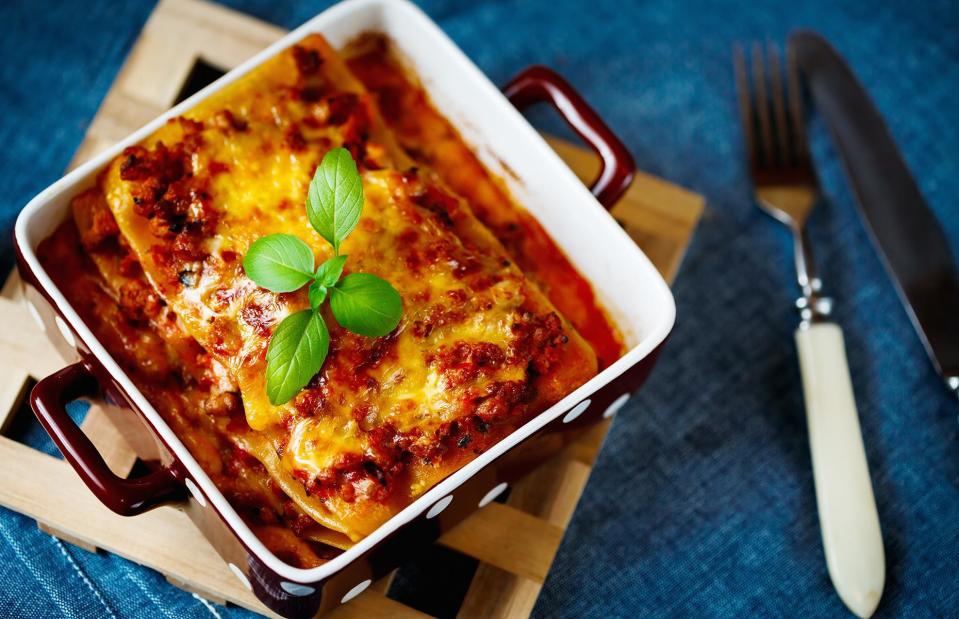
DG Stock/Shutterstock
Ever scoured a menu and felt overwhelmed by the complicated-sounding dishes on offer, or been left nonplussed by the culinary lingo bandied around on a TV cookery show? Don't sweat it. To help you brush up on a few complicated foodie phrases, we've compiled a list of the most confusing cooking terms you may have come across in recipes, restaurants and beyond – revealing what they really mean.
Read on to discover 39 food terms most people don't truly understand, counting down to the most puzzling of all.
39. Sauté
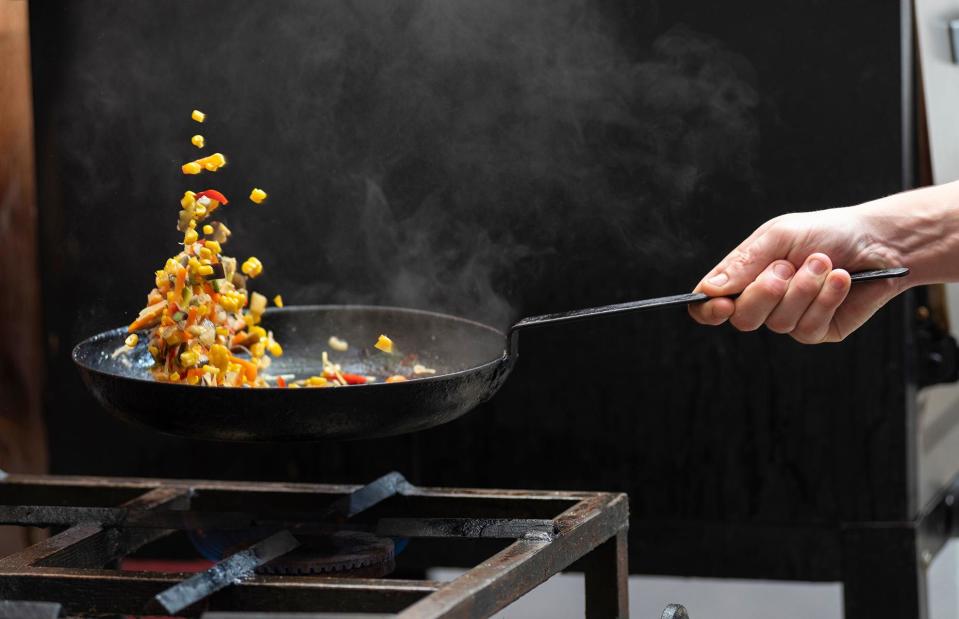
alejandro piorun/Shutterstock
A term derived from the French verb sauter, meaning 'to jump', to sauté something is to fry it over a high heat – usually in butter or oil, in a shallow pan. When sautéing, you'll need to keep the food moving by flipping and tossing it to ensure that it cooks evenly and doesn't stick to the pan. You're likely to see everything from sautéed vegetables to sautéed seafood on restaurant menus.
38. Soufflé
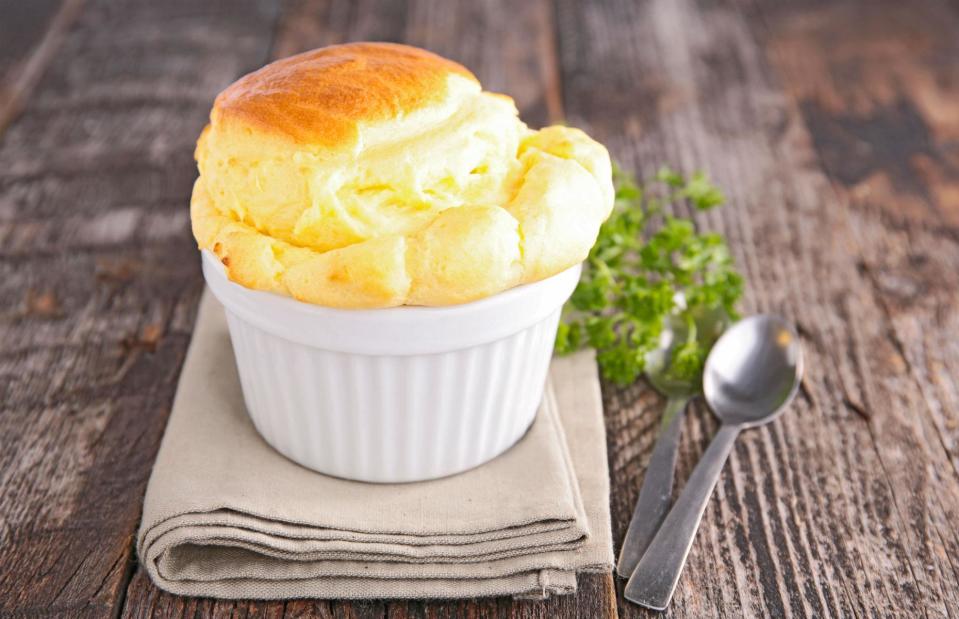
margouillat photo/Shutterstock
Served either as a sweet dessert or as a savoury starter, a soufflé is a baked egg dish that rises in the oven, creating a soft, fluffy texture. Soufflés originated in France in the early 18th century, and their name comes from the French verb souffler – meaning to blow, inflate or puff. Classic soufflé dishes include the cheese soufflé (made with melty cheese like Gruyère or Cheddar) and the decadent chocolate soufflé.
37. Mezze
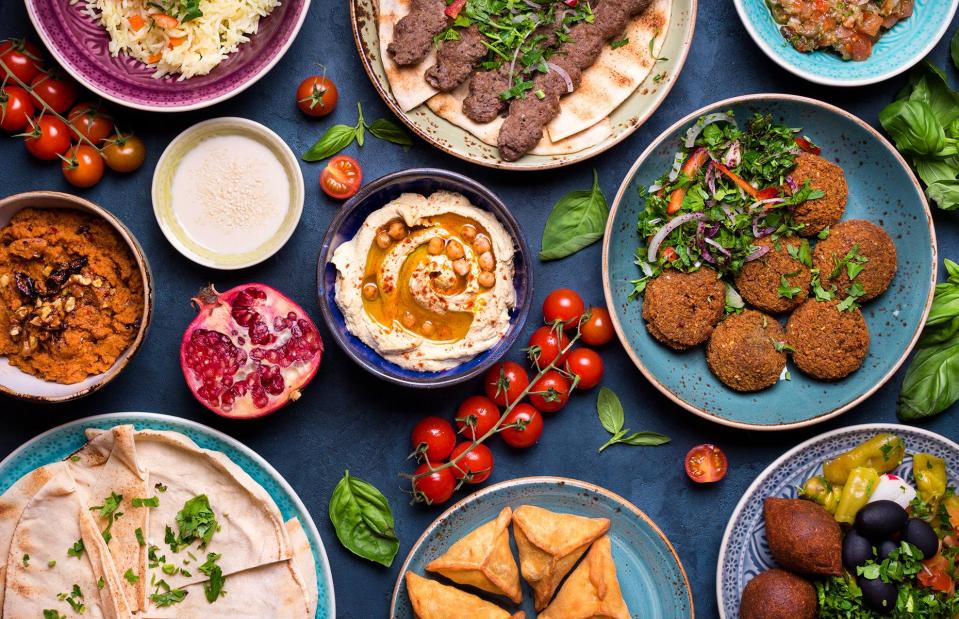
its_al_dente/Shutterstock
Usually enjoyed at the beginning of a meal, mezze is a selection of tapas-style sharing plates that's served in many former Ottoman Empire countries – including Turkey, Lebanon, Cyprus and Greece. Expect to find a mouth-watering array of cold and hot dishes, breads and dips on offer, including hummus, falafel, pitta breads and labneh (thick, strained yogurt with the consistency of soft cheese).
36. Terrine
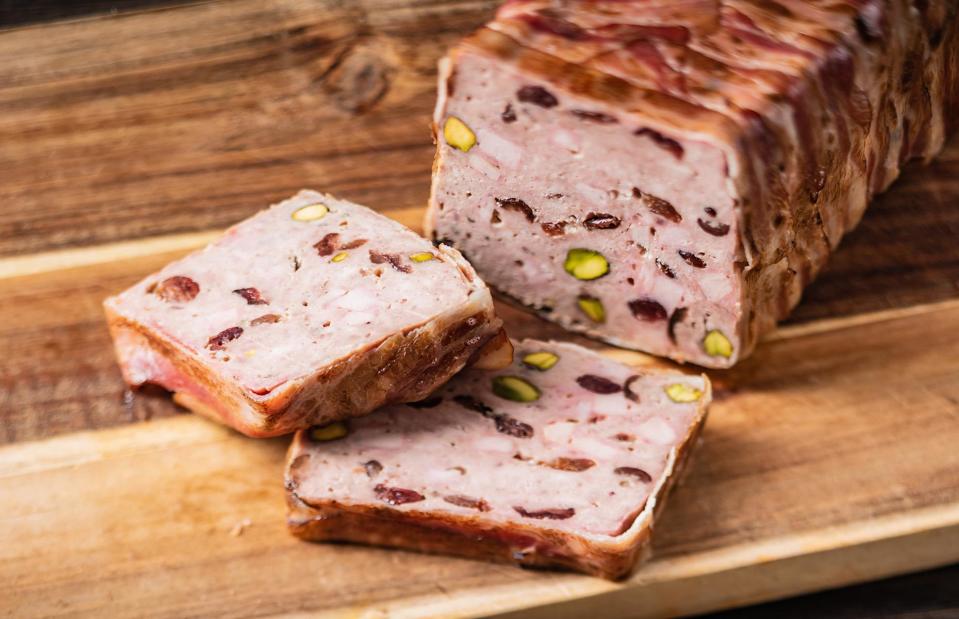
Chatham172/Shutterstock
You've seen terrines on restaurant menus – but what are they, exactly? Close your eyes and imagine a pâté, but with chunkier ingredients. Made from meat or fish, a terrine is a French dish that's cooked in a water bath in a loaf-shaped pottery mould (which is also called a terrine itself). Terrines are served cold, and you'll often find them paired with toasted bread, salad and chutneys.
35. Compote
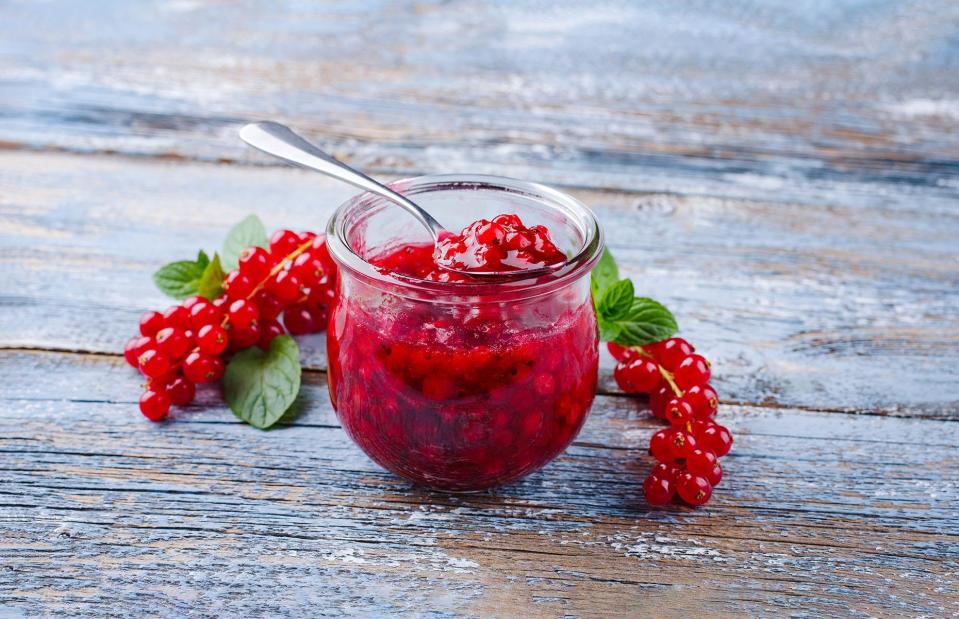
hlphoto/Shutterstock
Compotes are common accompaniments to sweet dishes, so you're likely to have seen this term on dessert menus (though they can sometimes be savoury as well). They're usually made by stewing fruit in water with sugar and spices – and they can be served with everything from ice cream, porridge and French toast to savoury dishes like pork chops and cheese platters.
34. Black and blue
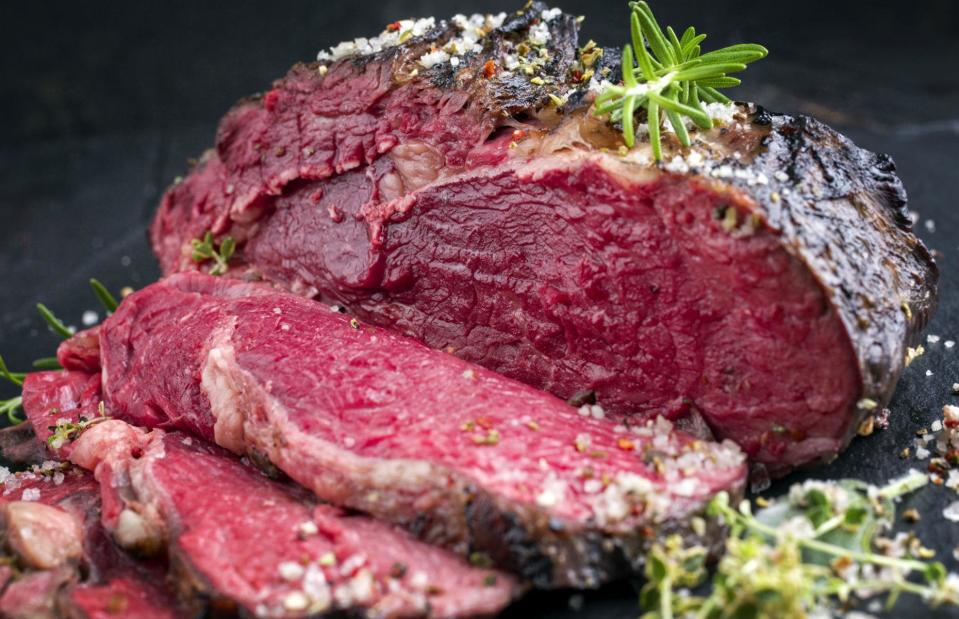
hlphoto/Shutterstock
Black and blue refers to a way of cooking steak (usually on a barbecue grill), and it's exactly as it sounds: the meat is black on the outside and blue on the inside. Well, sort of. The steak is charred around the edges, making it crisp and tasty, but it's still rare on the inside. A classic American recipe, it's also known as Pittsburgh-style steak, and it often comes served with vegetables, a side salad or mashed potatoes.
33. En croûte
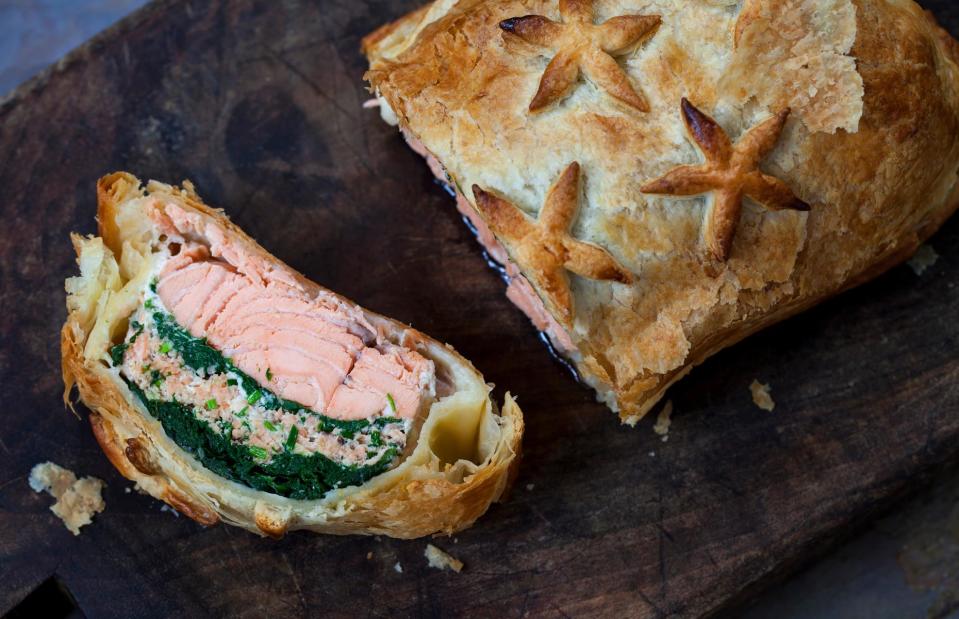
Magdanatka/Shutterstock
Salmon en croûte, chicken en croûte, blue cheese and spinach en croûte... you'll find 'en croûte' dishes on menus all over the place. But what are they, exactly? The French term translates into English as ‘in pastry’, and is used to describe meat, fish or vegetables that have been wrapped in a puff pastry parcel, then baked to perfection in an oven.
32. Blanch
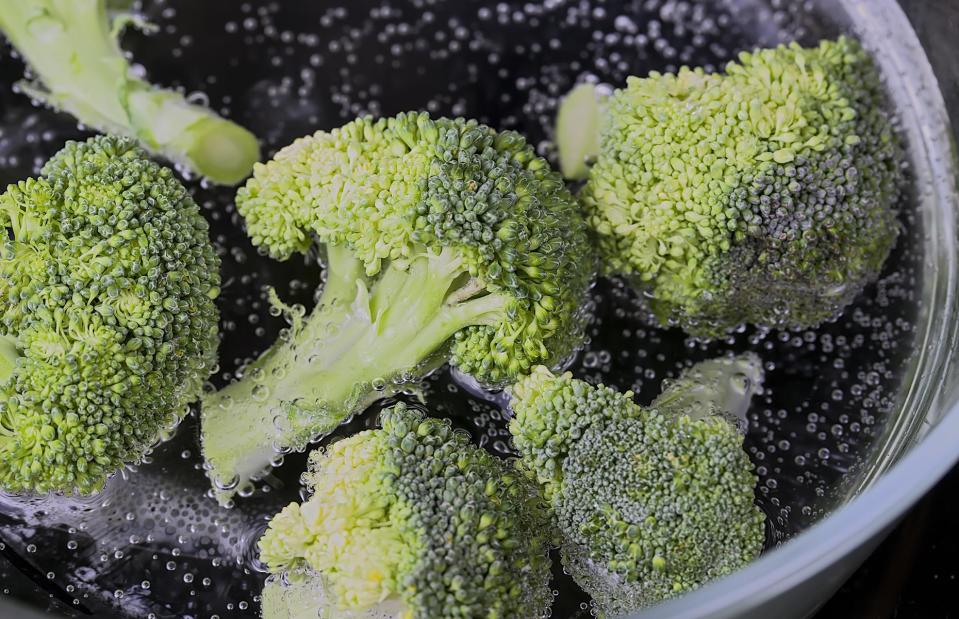
stu120/Shutterstock
Blanching vegetables is extremely popular in restaurants – not only does it prevent them from becoming overcooked, but it also helps to preserve their colour, flavour and nutrients. The method involves plunging the vegetables into boiling, salted water, removing them, then transferring them into a bowl of iced water to halt the cooking process.
31. Gratin

Esin Deniz/Shutterstock
A gratin is a rich, creamy dish that's topped with cheese or breadcrumbs, then baked in the oven until golden. Also known as dauphinoise potatoes, potato gratin – flavoured with garlic and cream – is perhaps the most famous example of this French favourite, but other tasty takes on the dish include tomato gratin and leeks au gratin. The term comes from the French verb gratiner, which literally means 'to brown'.
30. Crudités
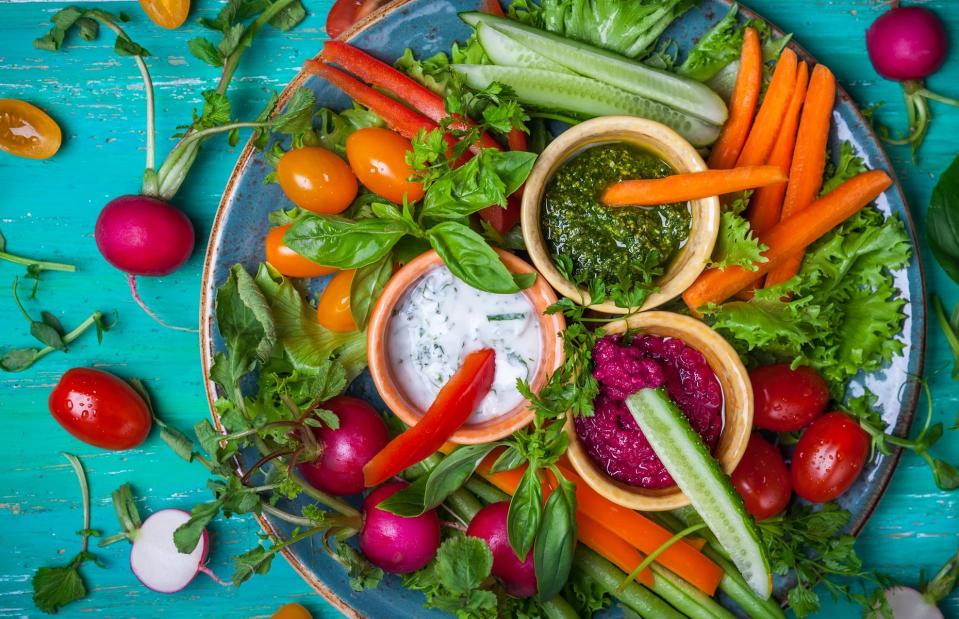
sarsmis/Shutterstock
The ultimate healthy nibble, crudités are raw vegetables – such as carrots, bell peppers, cucumbers and celery – that have been cut into sticks. Usually arranged prettily on a large platter, they can be served as a fresh, colourful starter or snack, and they often come complete with a tasty dip or two. The name comes from crudité, a French word meaning 'rawness'.
29. Jus
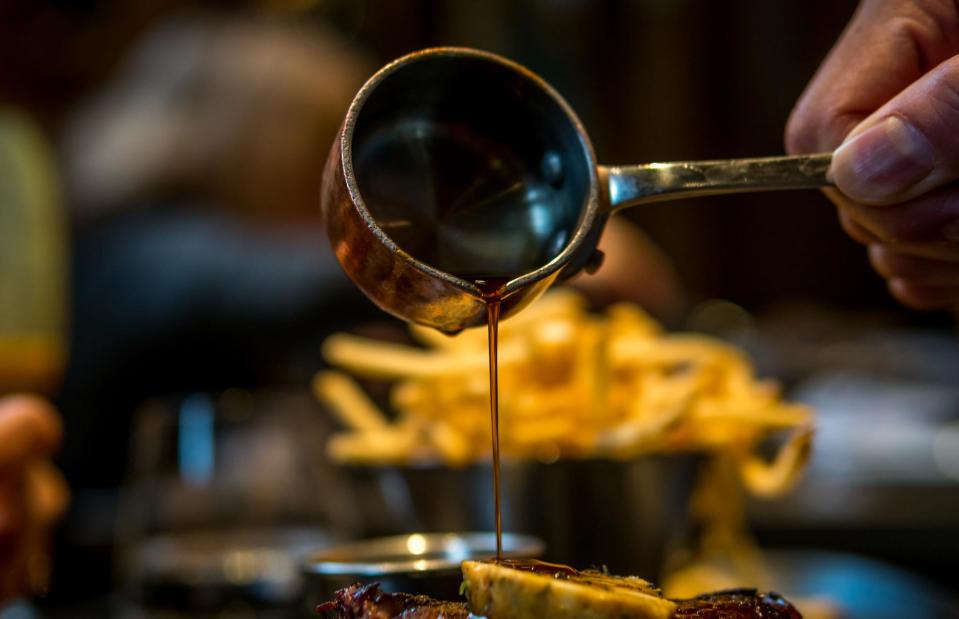
Lined Photography/Shutterstock
A jus is basically a type of gravy – although it's more likely to be clear, rather than thickened with flour or cornflour like most gravies. It's generally made from the natural juices released by meat as it cooks, often with added stock, wine and seasoning. Another French term, the word jus translates into English as 'juice'. Meanwhile, the phrase au jus simply means 'with juice', and refers to meat served in its own juices.
28. Tartare
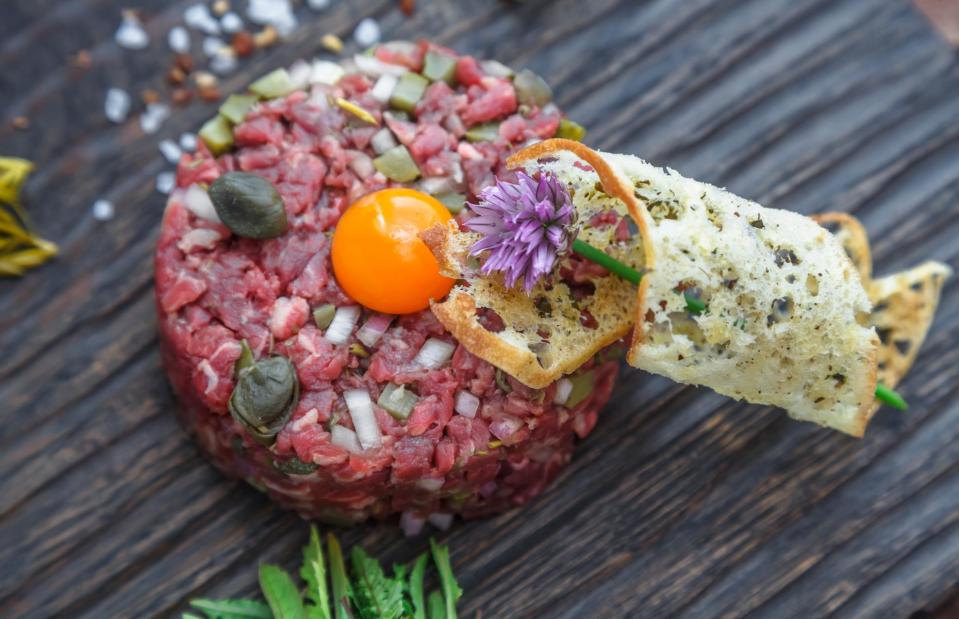
Konstantin Kopachinsky/Shutterstock
The tartare dish you're most likely to have seen on a restaurant menu is steak tartare, made from finely minced raw beef, mixed with raw egg and seasoning. However, these days, the term is increasingly being used for other recipes, too. You might find versions featuring chopped raw salmon or tuna, or even vegetarian takes on the dish, made with the likes of uncooked beetroot or avocado. This foodie technique is said to have been named after the Tartars, 13th-century Turkish warriors who stored horse meat under their saddles as they rode – tenderising it ready to be feasted on, raw, later.
27. Hors d’oeuvres
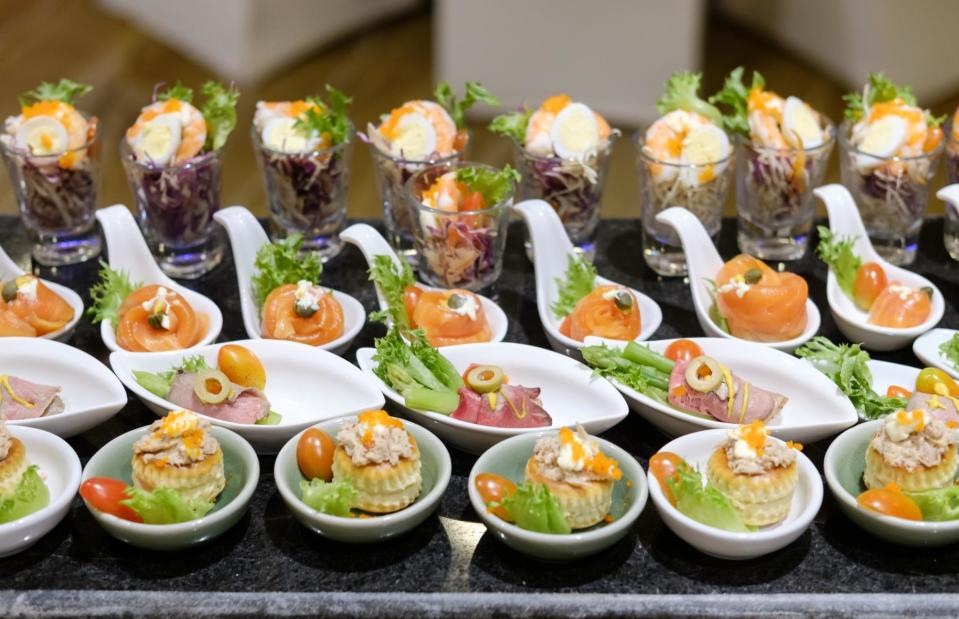
ImYOUR/Shutterstock
Hors d’oeuvres are usually served to accompany drinks before a meal. You're unlikely to be able to order them from a menu, but you may find them served at events and formal dinners. The French term literally translates as 'apart from the work' – in other words, outside of the main meal. Classic hors d'oeuvres include devilled eggs, bacon-wrapped dates and caviar-topped blini.
26. Dry-aged
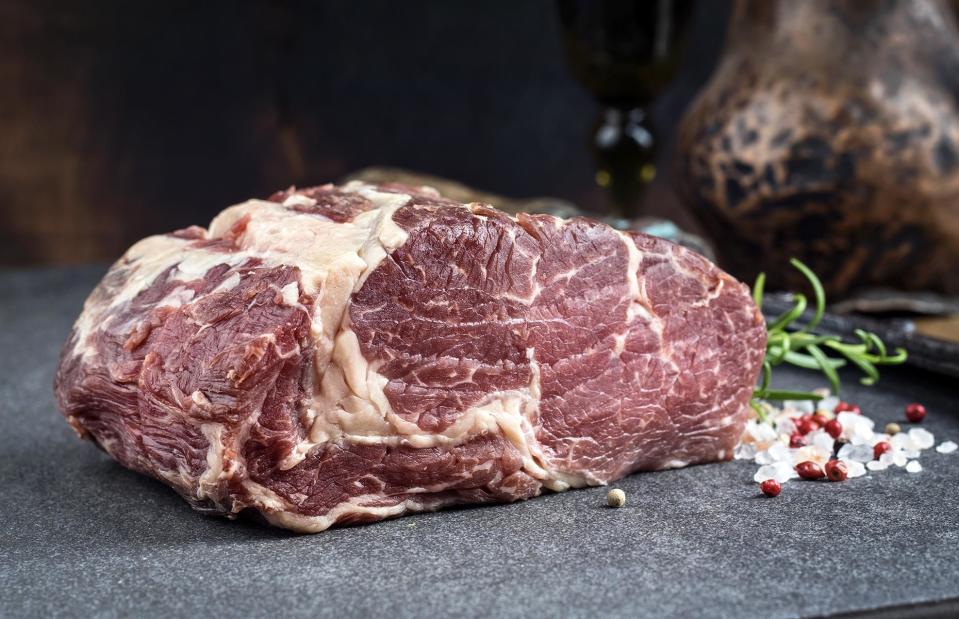
hlphoto/Shutterstock
Describing the way beef is treated before cooking, this term is most commonly used when talking about steak. Dry-aging means storing meat (sometimes for up to 42 days) in a specially constructed room where conditions like temperature, humidity, air circulation and bacteria levels are carefully regulated. This makes the meat more tender and gives it a richer flavour.
25. Apéritif

Michelangelo De Cia/Shutterstock
An apéritif is a (usually alcoholic) drink that's served before the start of a meal in order to prepare the palate and stomach for food. Many cuisines are famous for their own particular apéritifs – for example, in Italy (where apéritifs are called aperitivos), Campari and soda and Aperol Spritzes are the cocktails of choice. Meanwhile, in France, a traditional pre-meal tipple is Kir, a mixture of white wine and crème de cassis, a blackcurrant liqueur.
24. Unleavened
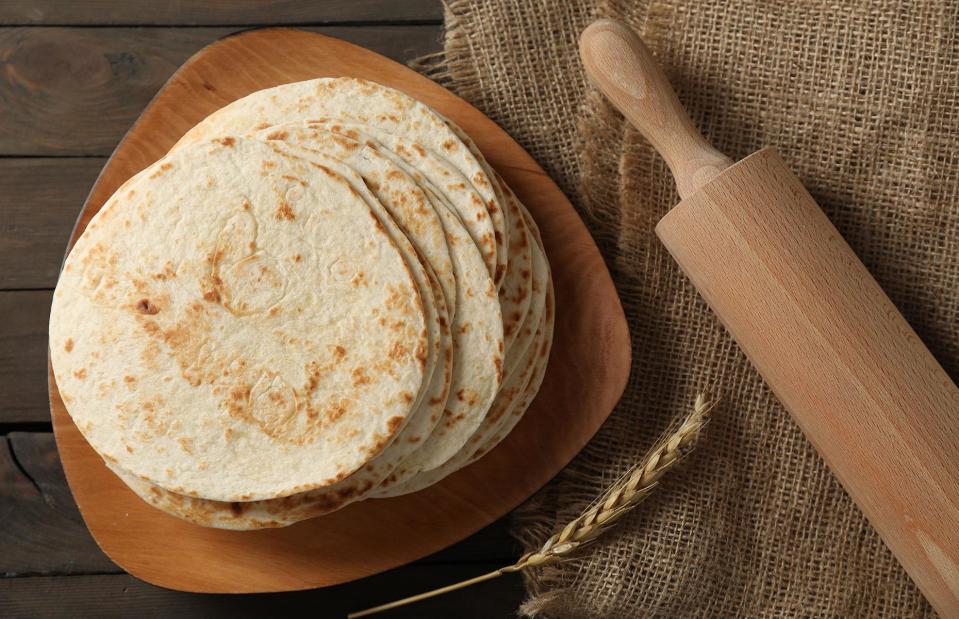
New Africa/Shutterstock
The term unleavened is used for breads, cakes and other baked goods that are made without any kind of raising agent at all – including flatbreads, tortillas and chapatis. The origins of unleavened bread can be traced back to ancient civilisations; it was commonly consumed by the Greeks and Romans, and there's even evidence that Ancient Egyptians enjoyed it as long ago as 4500 BC.
23. Amuse-bouche
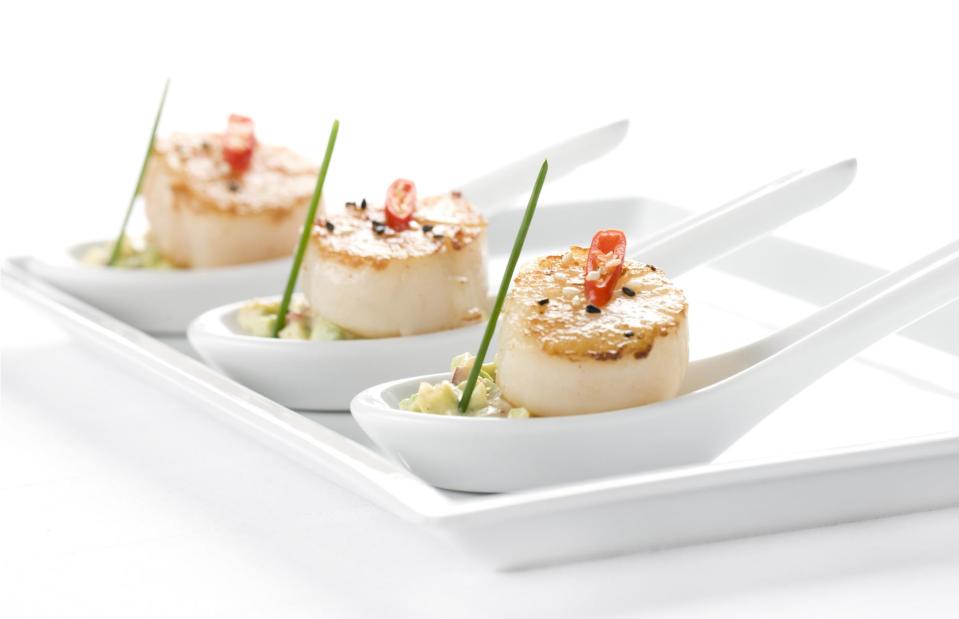
Geka/Shutterstock
An amuse-bouche is a small, bite-sized appetiser that's usually selected by the chef as a sample of his or her style of cooking. Quite literally, it's designed be a ‘mouth amuser’ that can be consumed in just one or two bites. It's usually served in fine-dining restaurants or at high-end dinner parties as an appetite-whetting nibble before the starter.
22. Julienne
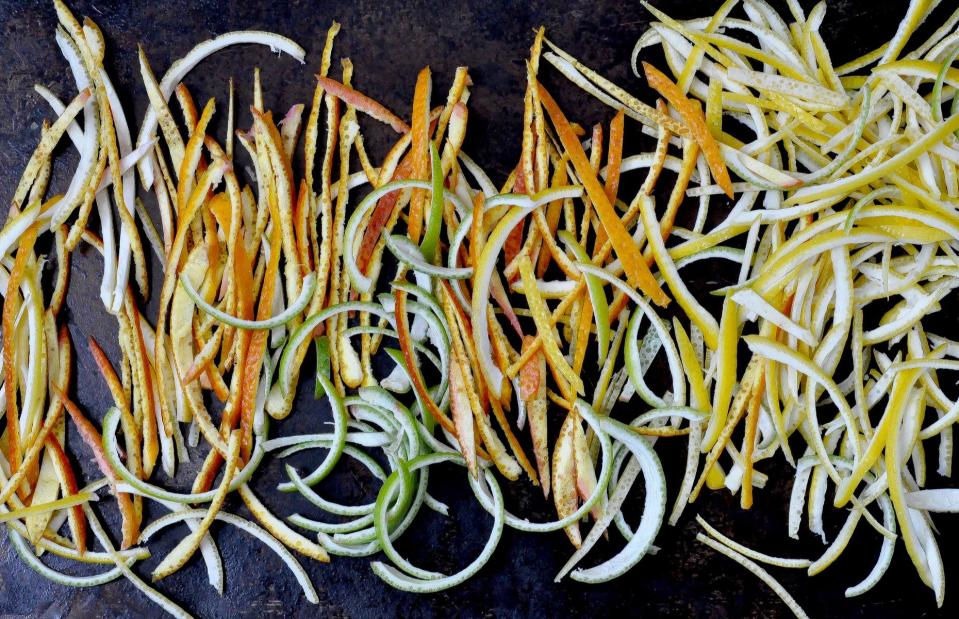
Diane Leach/Shutterstock
Julienne is the name used for fruit (especially citrus peels) and vegetables (think carrots, potatoes, celery and cucumbers) cut into uniform strips. Due to their size, you're likely to find these long, thin veggies in salads, stir-fries and garnishes rather than served as crudités. Preparing your vegetables julienne means they'll cook faster – and they'll soak up sauces and marinades perfectly.
21. A la plancha
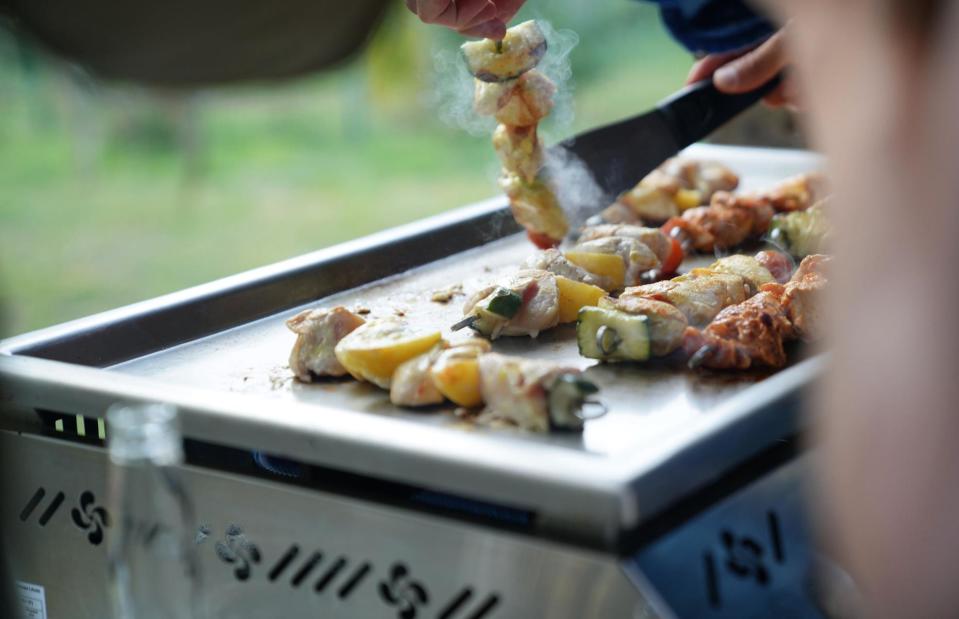
goodluz/Shutterstock
A Spanish cooking term, a la plancha traditionally refers to food that's grilled on a seasoned metal plate over a very high heat (though some restaurant menus will say a dish is cooked a la plancha even if it’s been grilled or cooked on a griddle). Cooking on a plancha helps to give meat and seafood a browned, slightly crispy exterior while sealing in the juices – leaving the inside wonderfully tender.
20. Confit
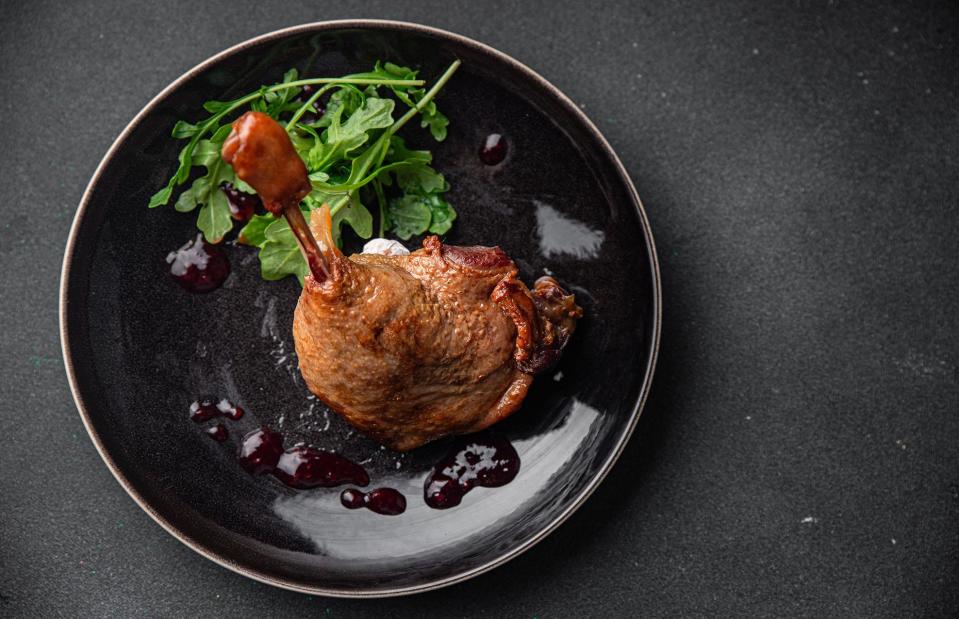
Alesia.Bierliezova/Shutterstock
The term 'confit' refers to foods that have been cooked in fat very slowly – often for many hours. A speciality of Southwestern France, this style of cooking was originally used as a method of preserving meat, as it helps to prevent bacteria from growing. However, these days you'll find rich, flavoursome veggie dishes such as confit onions and confit garlic alongside classics like confit duck legs.
19. Microfoam

I love coffee/Shutterstock
In recent years, the rising popularity of speciality coffee has brought with it a complicated insider language of associated phrases – including terms like microfoam. This modern-sounding word describes milk that’s foamed using a steam wand on a coffee machine, creating very small bubbles. Due to its fine texture, it's often used to make latte art. The opposite of a microfoam is a macrofoam: milk with large bubbles (commonly used in cappuccinos).
18. À la Florentine
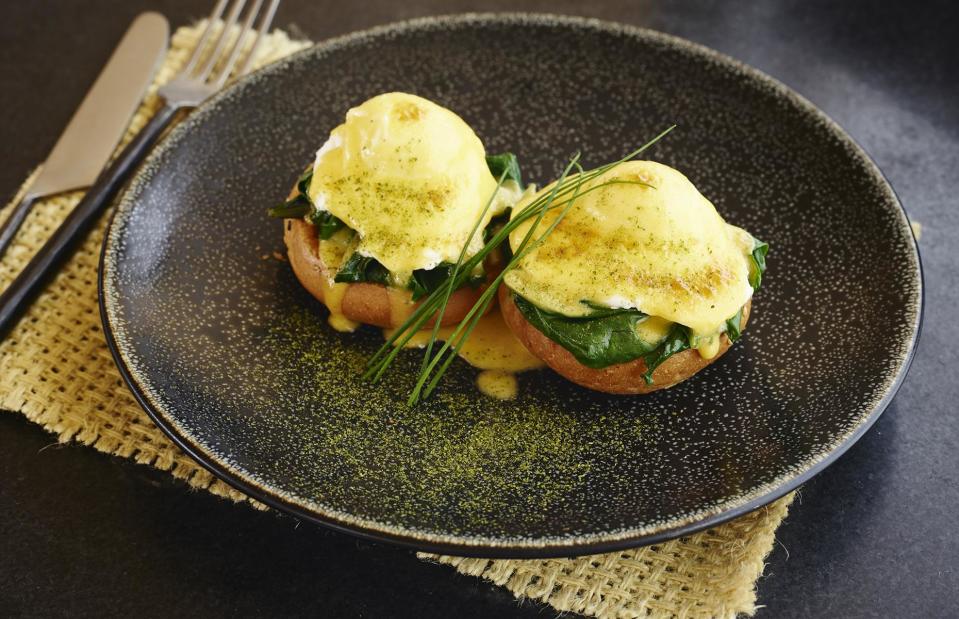
E_Sh/Shutterstock
Florentine dishes all have something in common: spinach. Dishes such as eggs Florentine and quiche Florentine are mistakenly assumed to be Italian when they are, in fact, French – but they're actually named after one Italian in particular. The story goes that Catherine de' Medici, of Florence's famous Medici family, brought spinach with her to Paris in the 16th century. It's said she was so fond of it that she asked for it to be added to all the dishes she ate.
17. Semifreddo
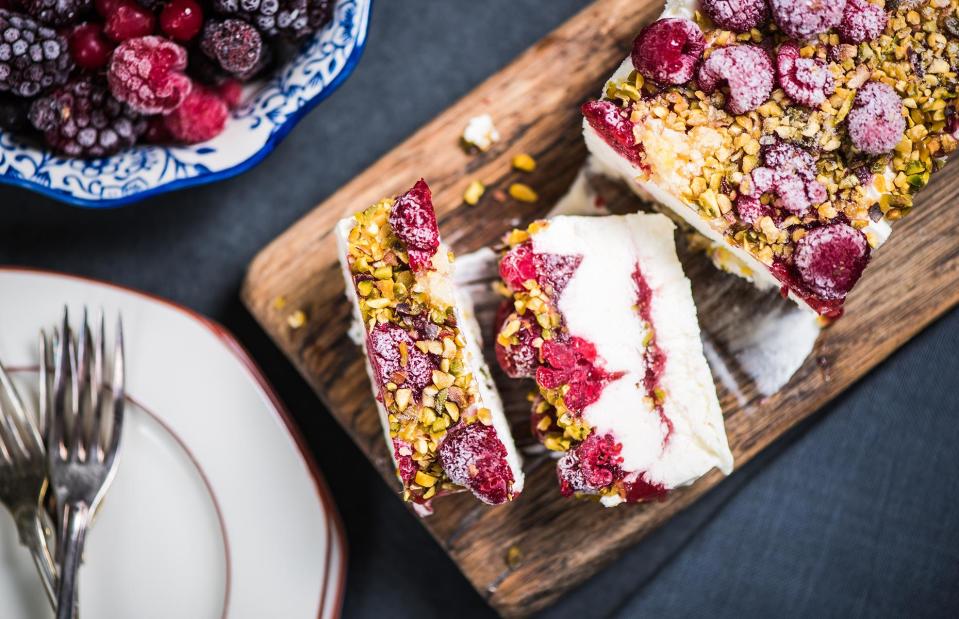
marcin jucha/Shutterstock
This Italian favourite can come in all flavours, shapes and sizes, but it’s the dessert's semi-frozen quality that makes it a semifreddo. Made from a base of eggs, sugar and cream, it’s a bit like a cross between an ice cream and a mousse, and its name literally translates into English as 'half-cold'. An Italian riff on the classic French parfait, the first recipes for semifreddo began to pop up at the turn of the 20th century – and the velvety-smooth concoction has been tantalising the taste buds of sweet treat fans ever since.
16. Deglaze
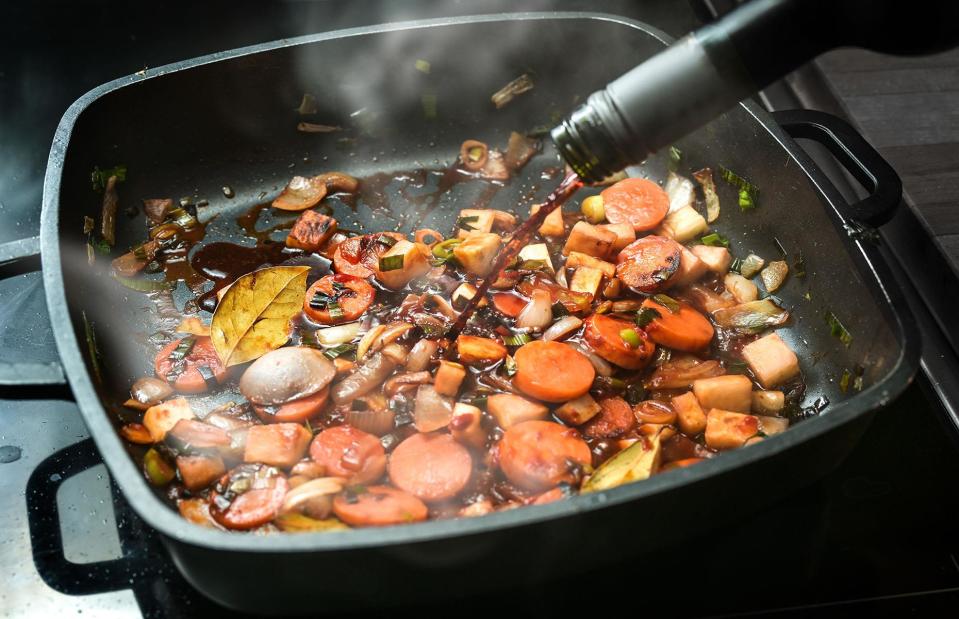
Maren Winter/Shutterstock
This one sounds like it should be a complicated cooking technique, but it's really very simple. The term deglazing refers to the act of adding liquid to a hot pan in order to loosen up all the brown bits stuck to the bottom – whether they're bits of caramelised onion or leftover scraps of meat. The resulting flavour-packed mixture makes the perfect base for sauces, gravies, soups and stews.
15. À la carte
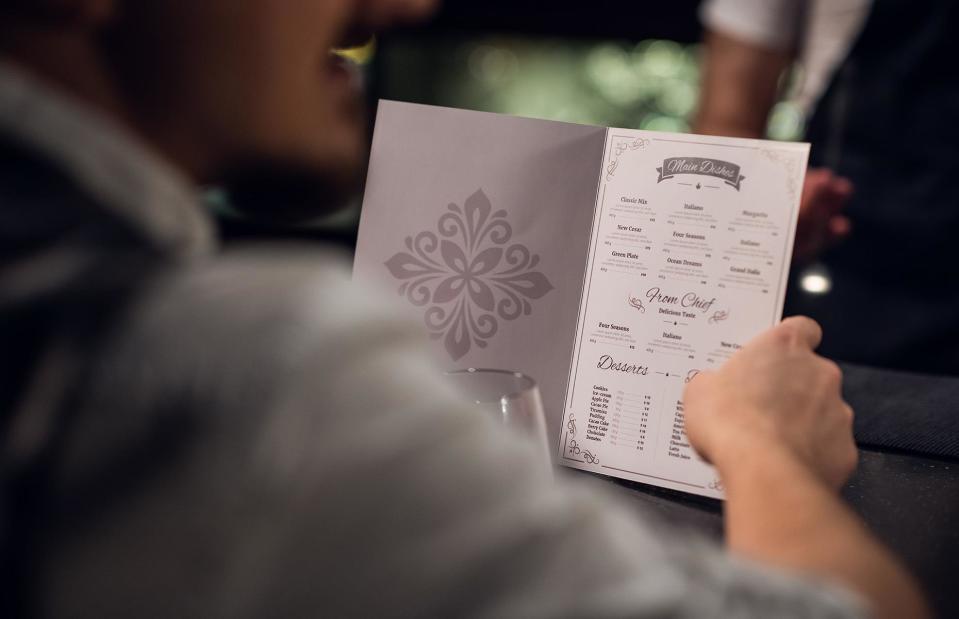
Ann Kosolapova/Shutterstock
This is among the most commonly misunderstood phrases on menus around the world. What does it mean? The literal translation of the French phrase is ‘according to the menu’. However, à la carte is usually used to refer the restaurant's full menu, from which you can order individual dishes – rather than set two- or three-course options.
14. Reduction
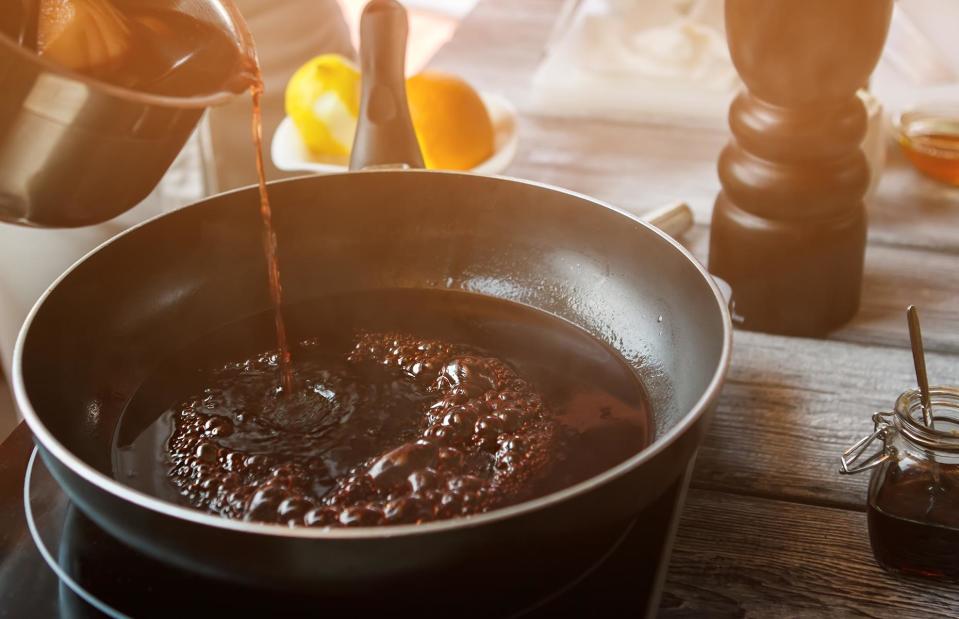
DenisProduction.com/Shutterstock
Simply put, a reduction is a sauce that’s made by reducing liquid in order to intensify flavour. When the liquid, for example wine or stock, is brought to a rapid boil, the water in the liquid turns to steam and evaporates – meaning all the other flavours become more intense. Among the most common reductions are red wine sauces, often served with steak and other red meats.
13. Al forno
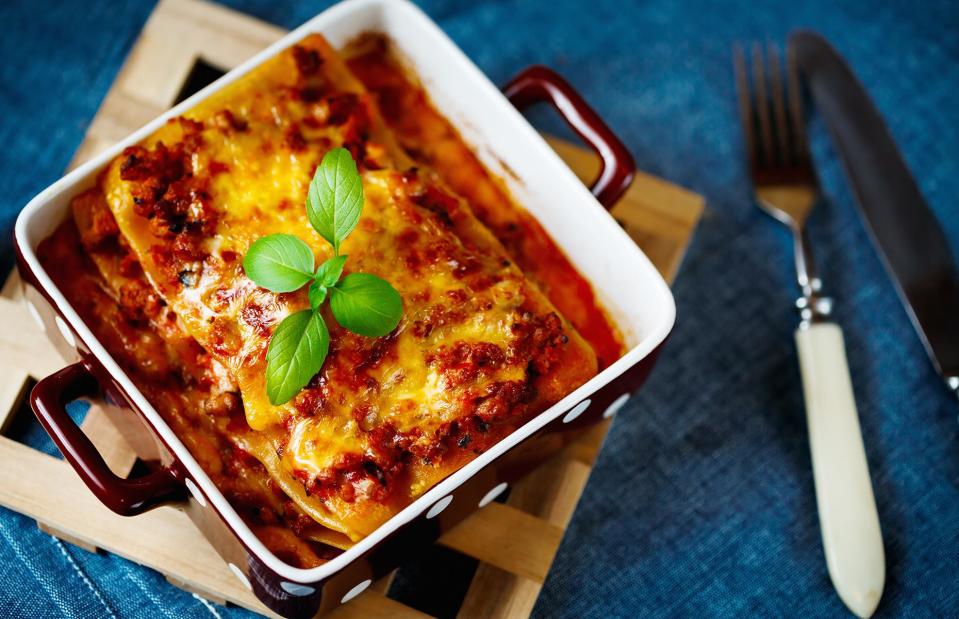
DG Stock/Shutterstock
You’ve probably come across this common term countless times on Italian restaurant menus – especially if you've ever dined on a classic lasagne. There's nothing tricky about this one; al forno simply means 'oven-baked'. As well as the popular lasagne al forno, other dishes that can be prepared this way include tortellini (stuffed pasta), ziti (long pasta tubes) and vegetables like artichokes and aubergines.
12. Dim sum
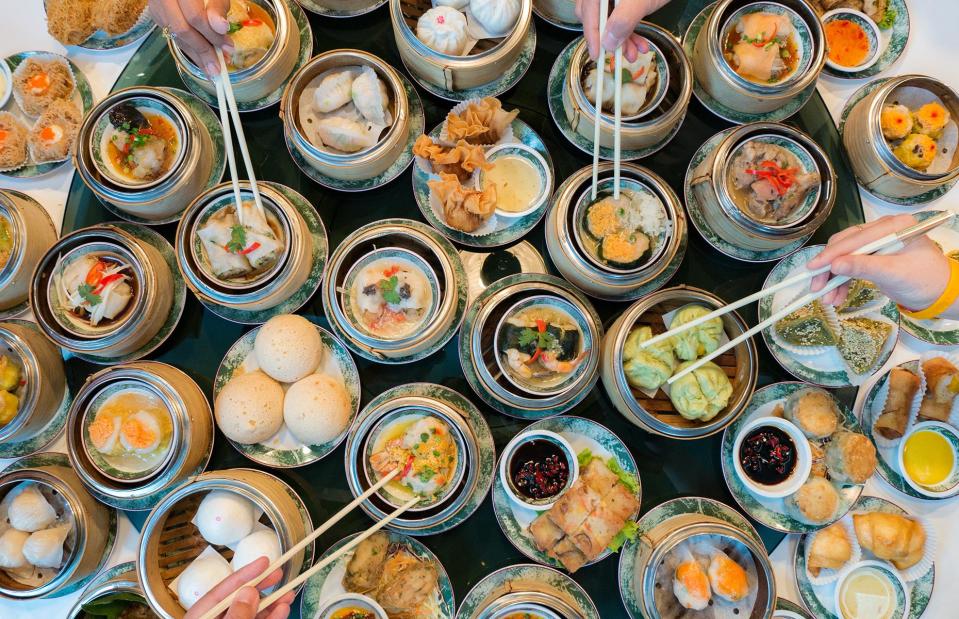
Kia Nakriz/Shutterstock
In Chinese restaurants you’ll often find a whole page (if not a wider section) of the menu dedicated to dim sum – but what exactly is it? The term refers to small, bite-size portions of food, mostly buns and dumplings, that are usually served with tea. Though dim sum is traditionally associated with Chinese yum cha brunches, it's now commonplace for it to be served at dinnertime, too. The dishes are usually presented in bamboo baskets if steamed, and on plates if fried.
11. Ballotine
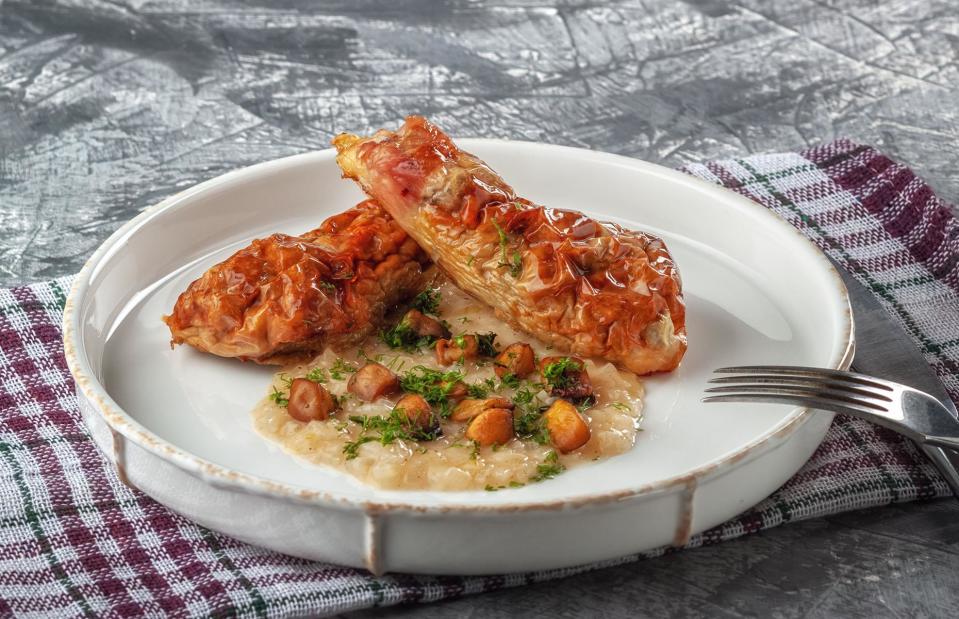
Natalya Yudina/Shutterstock
You’ve probably eaten a stuffed chicken breast before – and as it turns out, a ballotine isn’t very different. This cooking method involves stuffing meat (usually chicken or duck) with forcemeat, a finely chopped mixture of lean meat, fat and seasoning. The whole thing is then rolled into a sausage-like shape, tied up (or wrapped in cling film), then roasted, braised or poached.
10. Cold-pressed
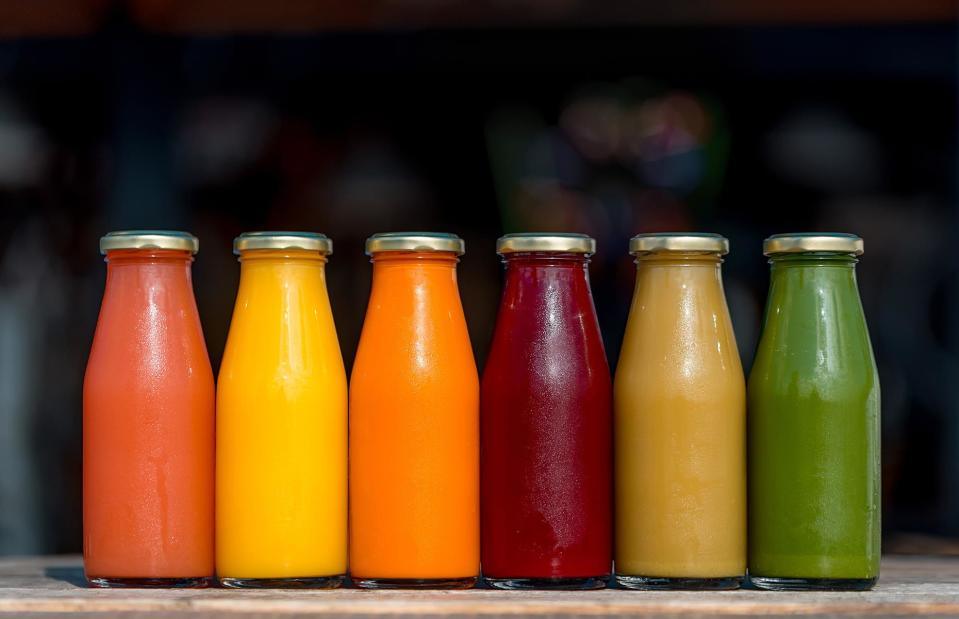
Yakov Oskanov/Shutterstock
From juices to olive oil, the term cold-pressed can be found on a bevy of different product labels – but what difference does cold-pressing actually make? As the name implies, this technique sees juice or oil extracted from fruit without the application of any heat (including that of fast-moving blades). Experts say that this results in a more nutritious product with a longer shelf life, as less air is forced in during the process.
9. Umami
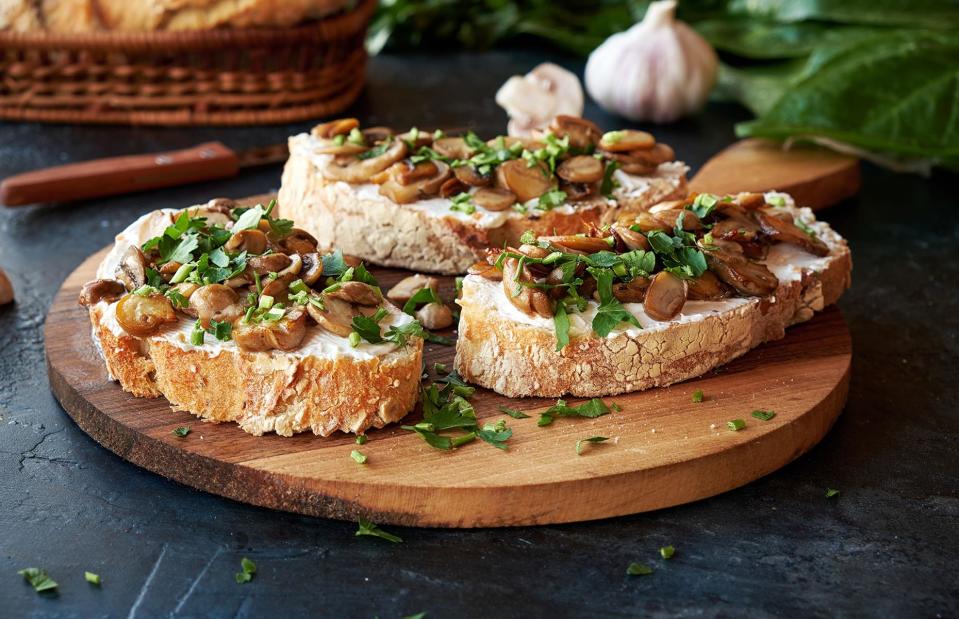
SergeyKlopotov/Shutterstock
These days, umami is known as one of the five basic tastes (along with sweetness, saltiness, sourness and bitterness). But can you put your finger on what it actually means? Umami was discovered by Japanese chemist Kikunae Ikeda over a century ago, and it refers to the deeply savoury taste that can be found in glutamate-rich foods like mushrooms, tomatoes, meat and cheese. The word literally translates into English as 'pleasant savoury taste'.
8. En papillote
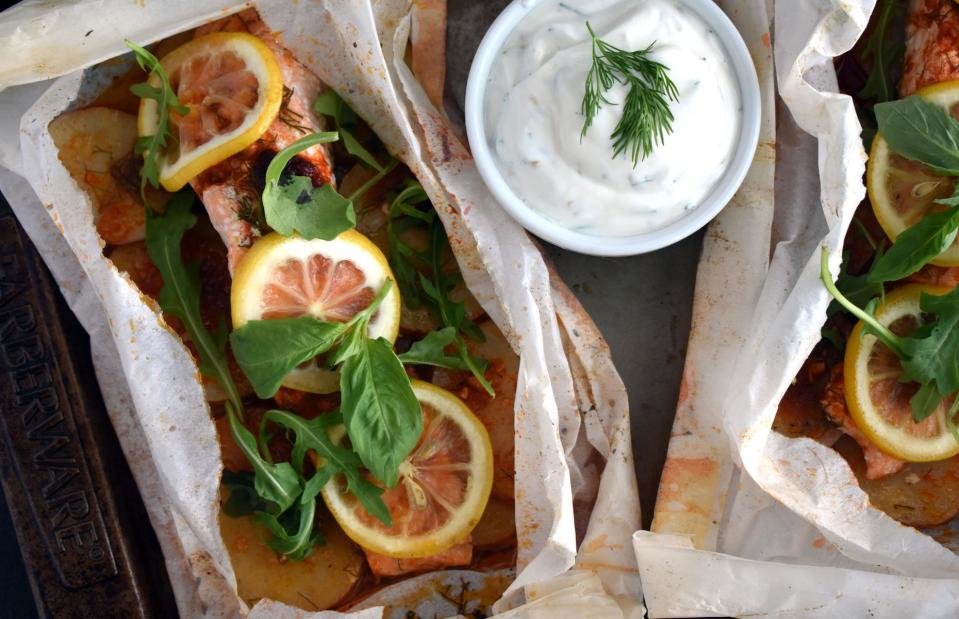
Candice Bell/Shutterstock
Much like en croûte, en papillote is a method of cooking that sees a filling wrapped in a folded parcel – but this time, rather than pastry, the case is usually made from parchment paper or aluminium foil. The nifty steaming hack, commonly used when cooking fish, vegetables, lamb or poultry, seals in all the delicious juices and flavours as the parcel bakes in the oven.
7. Emulsion
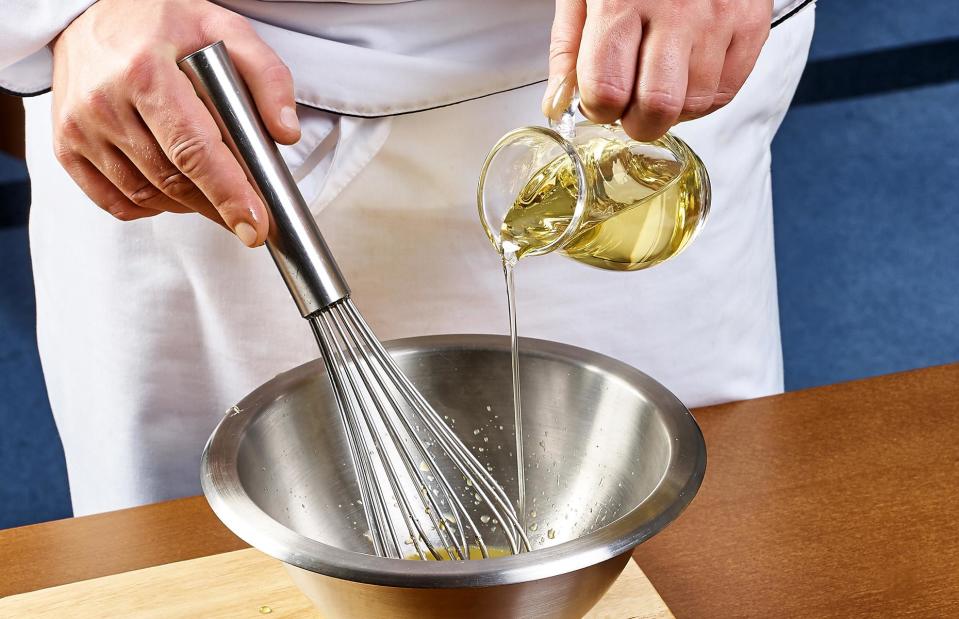
photoAZ/Shutterstock
Simply put, an emulsion is a mixture of two liquids that wouldn’t normally mix – for example, an oil and a water-based liquid. Well-known examples of emulsified foods are mayonnaise, Hollandaise sauce and aioli. An emulsion is made by adding one liquid to another, drop by drop, while vigorously beating the mixture to ensure that the two liquids amalgamate.
6. Roux
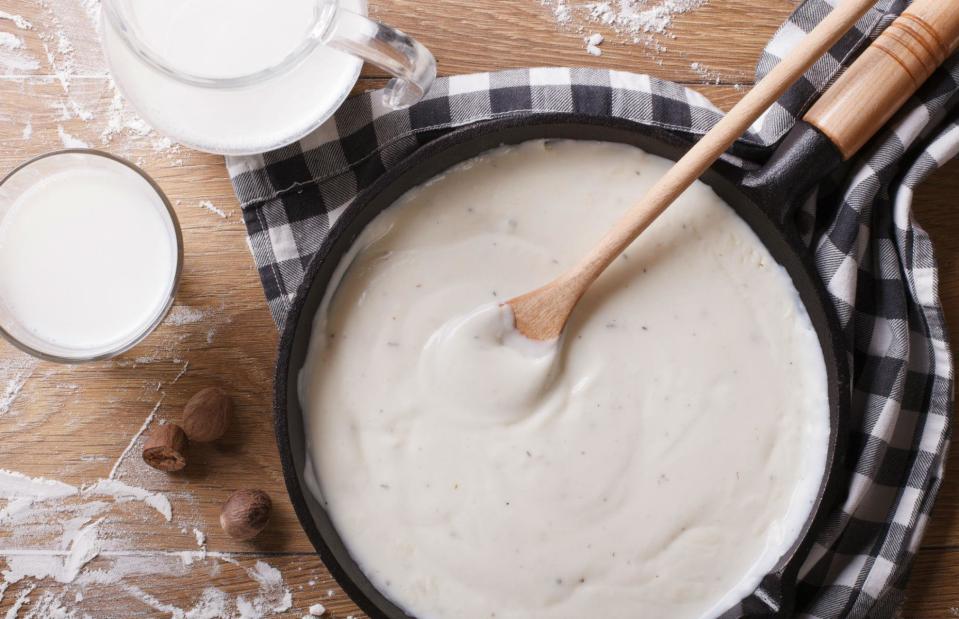
AS Foodstudio/Shutterstock
Used to make soups, stews and sauces deliciously thick, a roux is made from a mixture of fat and flour, which are cooked together before liquid (usually milk or stock) is gradually added. Not only does the humble roux provide the base for three classic French sauces – béchamel, velouté and espagnole – but it's also a staple of Cajun and Creole cuisines, used in dishes like gumbo and jambalaya.
5. Sous vide
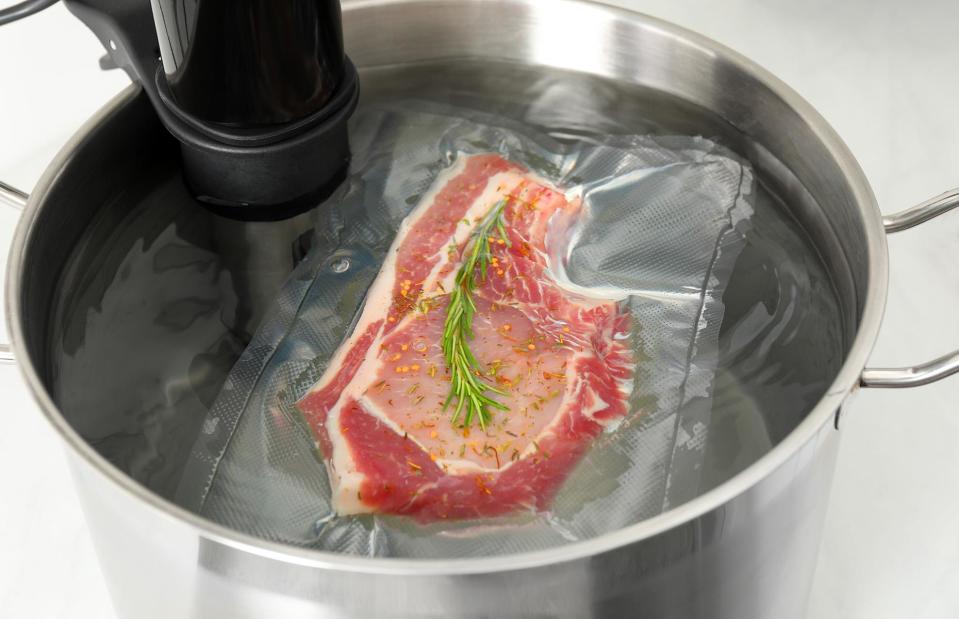
New Africa/Shutterstock
Invented by French chef Georges Pralus in the 1970s, the sous vide method of cooking has taken off in a big way in recent years. It involves cooking vacuum-packed food – often steak – in a water bath at a low and constant temperature, allowing for greater precision and improved texture. When prepared sous vide (literally 'under vacuum'), a steak will take significantly longer to cook, but you can be safe in the knowledge that it'll never come out overdone.
4. In brodo
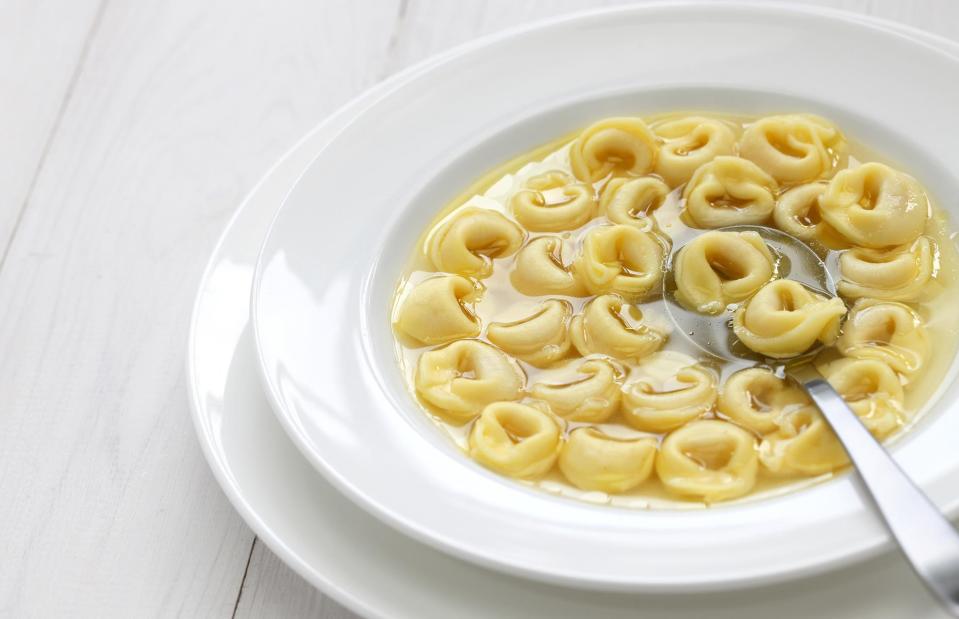
bonchan/Shutterstock
Directly translated, in brodo means 'in broth', which is how a dish with this name is served. You’ll most likely come across this term in reference to the traditional northern Italian pasta dish tortellini in brodo: fresh egg pasta tortellini stuffed with a meat and cheese filling, cooked in a meaty broth, and served with a generous sprinkle of Parmigiano Reggiano.
3. Antipasti
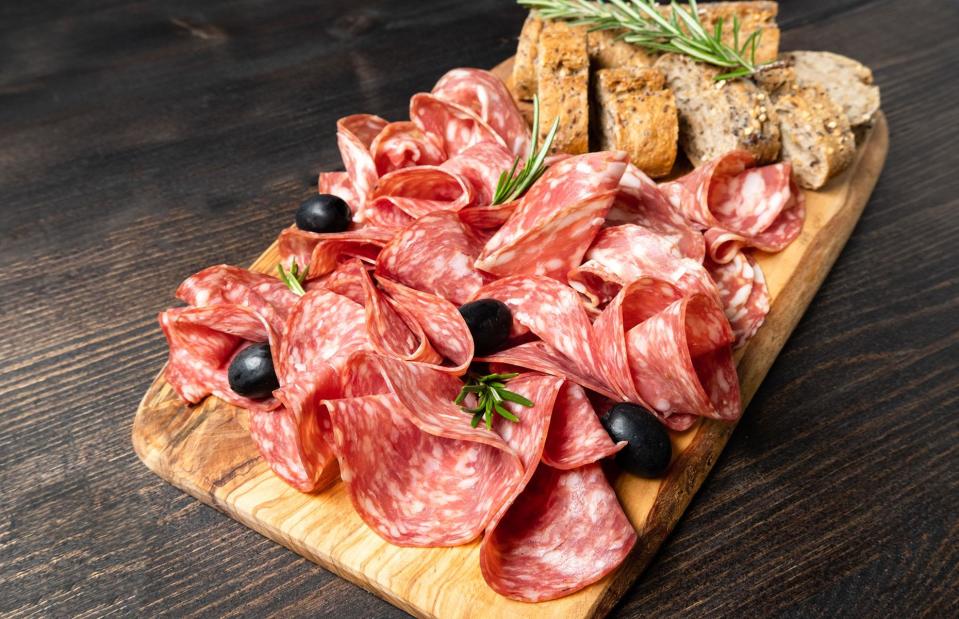
Elena.Katkova/Shutterstock
Deciphering a menu written in Italian is a lot less confusing once you understand what each course actually means. Antipasti are appetisers, but shouldn’t be mistaken for starters; these small plates usually consist of meats, olives and bread. Meanwhile, primi are starchy starters like gnocchi, pasta and risotto – and secondi dishes are meaty main courses. Contorni refers to vegetable side dishes, while dolci are simply desserts.
2. Bain-marie
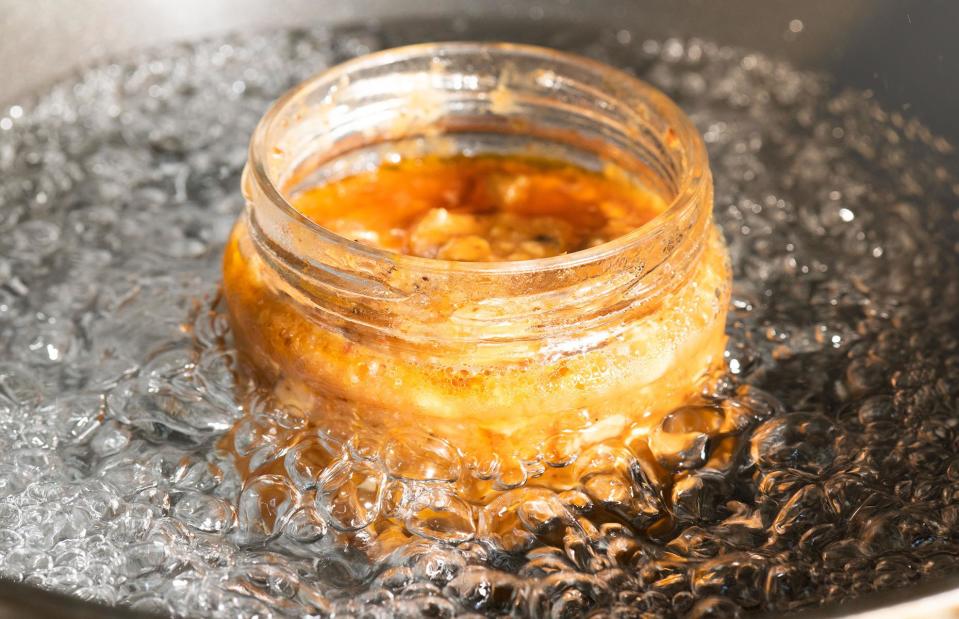
Keitma/Shutterstock
Ever given up on a recipe because it calls for a tricky-sounding bain-marie? It's really not as complicated as it sounds. A bain-marie – 'Mary's bath' in English – is just a fancy way to describe a water bath used to cook delicate foods like custards, terrines, mousses and cheesecakes via a gentle, even heat. The story goes that the Mary behind the French term is Mary the Jewess, an alchemist who is said to have lived in Alexandria, Egypt between the first and third centuries AD.
1. Al dente
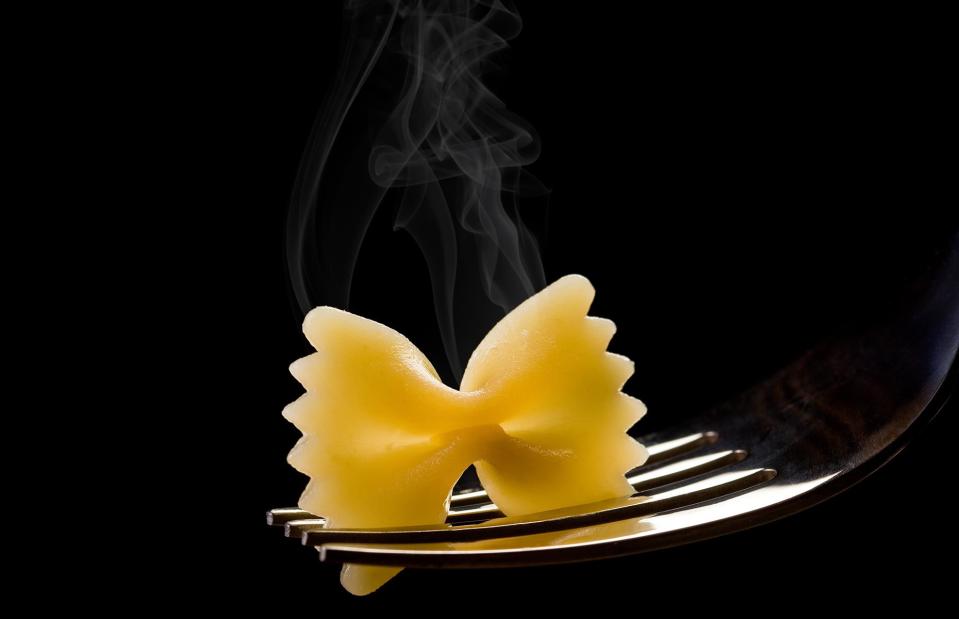
Francesco83/Shutterstock
A common term in Italian cooking, al dente literally translates as ‘to the tooth’. It describes pasta that’s perfectly cooked – neither too mushy nor too hard, and still a bit firm and chewy when bitten. It's not reserved exclusively for pasta, though. Al dente can also be used when talking about the firmness of rice or vegetables; it’s not unusual for a recipe to call for carrots to be boiled until al dente.


